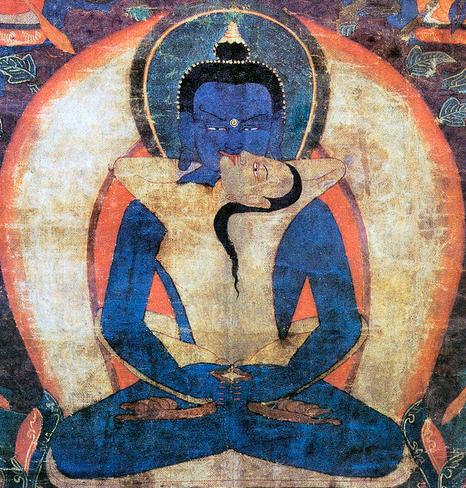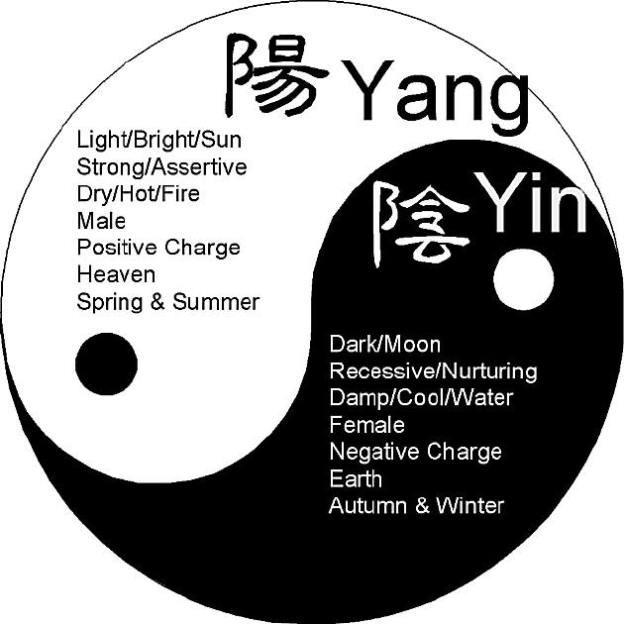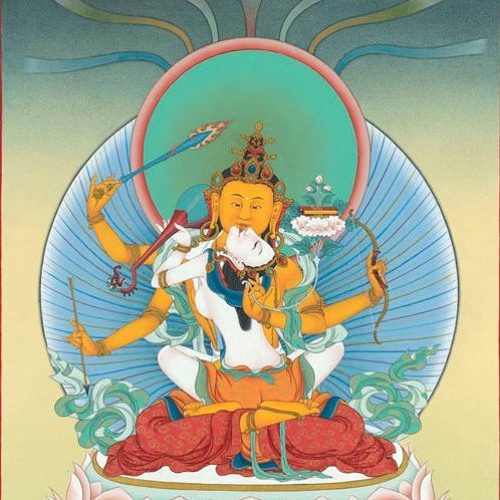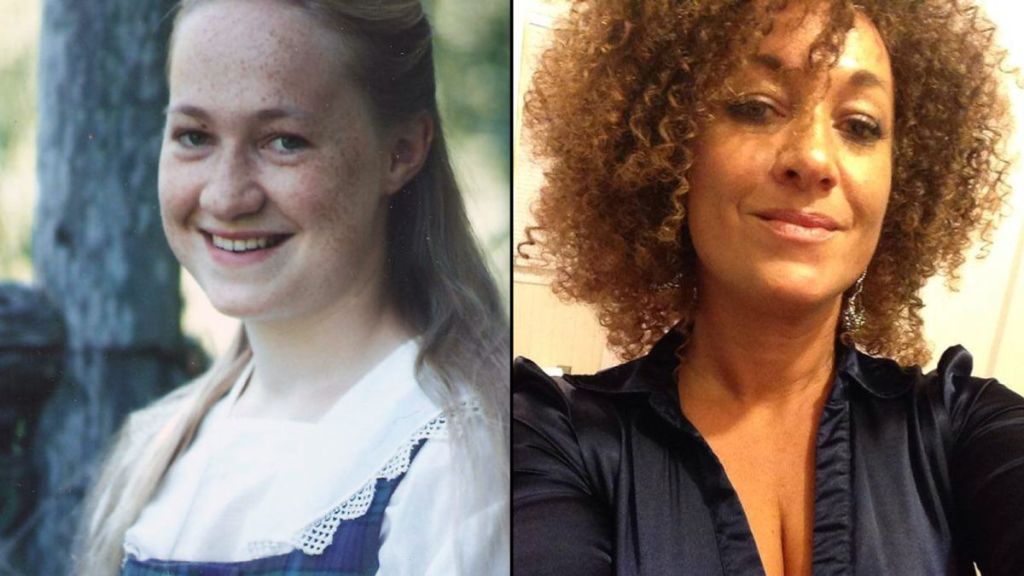
There is much misunderstanding about tantric sexual union practice in Vajrayana, as practiced in the Tibetan Buddhist tradition. This is one of the main reasons it is kept ‘secret’ and only for the initiated. For many, including some well-known Tibetan Buddhist male teachers, it is seen, and used, as another outlet for hedonistic lust, predatory attachment and pleasure in the name of ‘spirituality’. Yet, as I wrote about recently in Tantric Buddhism, vows, sex and women – the importance of love, respect and consent, authentic ‘physical’ unions are undertaken for attaining enlightenment, based on strict commitments and vows, and involve advanced practices of pranayama, yoga and visualization; thus only to be attempted by those with deep realizations of emptiness and a very stable foundation of bodhicitta (love and compassion).
In Vajrayana Buddhist representations of the male-female union they are generally naked and in sexual embrace. As I wrote about in Ultimate ‘ecstatic union’: the meaning and role of ‘erotic bliss’ in tantra and Kālacakra , the energy of orgasm, lust and bliss are transformed into a non-dualistic sphere, which is a taste of the dharmakāya, the union of bliss-emptiness.

Opposites united and merged into one
Ultimately speaking, all such conceptual notions of ‘male-female’, ‘yin-yang’, ‘black-white’ are imaginary and not truly existent. Some male Buddhists (who benefit from gender inequality and patriarchy) like to lecture people on the ultimate level view when their own sexism and misogyny is called out. However, in terms of the relative, dualistic worldly level (and even on the sambhogakaya and nirmanakaya levels) such distinctions and ‘aspects’ appear and are used for good reasons. Ordinary, deluded beings see things dualistically after all.
So, next time a male Buddhist teacher patronisingly tells you (when querying sexism and gender inequality in Buddhist cultures) that there is no gender in the ultimate view, kindly tell him that in that view there are also no teachers or human beings either, so why is he teaching and taking donations? 🙂
In ancient Chinese philosophy, there is also yin and yang, the idea of dualism, that seemingly opposite or contrary forces are complementary, interconnected, and interdependent in the natural world. In Buddhist Vajrayana practice the idea is to merge the union of two polarities of male-female, bliss and compassion into one single, inseparable union.

Male-female Tantric symbolism as union of bliss-emptiness

In Tantra/ Vajrayana, the ‘male’ and ‘female’ terms symbolise the bliss/bodhicitta (male) and emptiness/wisdom (female). They are thus symbolic of the union of the ultimate nature of reality and mind.Visualisations of deities in union embody the actual nature of ultimate reality and mind, and so they are continually present in all beings inseparably.
So what has sexual union got to do with it? The orgasmic bliss (prolonged and held in the central channel and pervading the entire body-mind continuum), is one of the essential qualities of the Dharmakaya. People and beings seek this bliss in sex, relations, food, friendships, work, status and so on, but are generally dissatisfied because it is short-term and temporary.
However, the biological physical sex of the man and woman are not irrelevant either. Such physical practices have to be undertaken without any strong lust or attachment for sex, orgasm and clinging to notions of self and other. Therefore, worldly sex has little to do with it. The energy of sexual lust, bliss, orgasm and so on is very much used and transmuted during the process. Compared with the bliss of an ordinary coupling, the tantric union is one of extremely intense bliss combined with love and thus one would never want to ‘go back’ to ordinary sex afterwards! After all, many of the world’s most advanced tantric practitioners are celibate monastics and there is no contradiction in that, if the union is done correctly for the right reasons.
The inner channels and essences

In terms of the ‘vajra body’ present in human beings, these are detailed in the Kalacakra Tantra, and are discussed briefly by Taranatha in the first chapter of his Kalacakra magnus opus, A Hundred Blazing Lights, see here. These vajra bodies are the same for both men and women. However, the inner channels of men and women are in different, physical locations. In addition, biological men and women are said to have particular essences (khu) – white essence for men (semen) and red essence for women (blood). These are regularly referred to throughout texts on tantric tsa-lung practices. The joining and mixing of these essences is a vital part of tantric union practice.
Thus, a biological woman, even one who is a butch lesbian (for example), would have more of the red essence than a man due to her biological foundation. Similarly, a biological man, no matter if transgender or ‘effeminate’, would have more of the white essence.
So for that reason too, physical union practice has to be done with biological male-female.

Worldly notions of gender and sexist male-female distinctions

“Man is defined as a human being and a woman as a female — whenever she behaves as a human being she is said to imitate the male.”
–Simone de Beauvoir, ‘The Second Sex’
From a worldly perspective, the question of gender identity and transgender is a hotly debated topic in feminist, transgender and LGBT circles, with the greater freedom and expression now enjoyed by transvestites and transgender people (in some cultures and countries). I am not an expert on this topic. However, much as I am a liberal who believes people should be able to love, dress and look as they please (within the bounds of human ethics and non-violence), I tend to agree with gender-critical commentators who resist and push back against the idea that someone becomes the same as a biological ‘woman’ merely by changing their physical appearance to look like a woman and saying they identify as such.
Transgender women often choose to demonstrate their ‘womanhood’ with silicone breast implants, injections of synthetic female hormones, dresses and high heels. However, fully functioning breasts (that produce milk), womb and vagina cannot be implanted in a biological man (yet). For that reason (and others), many biological women (who have grown up being identified as female) have argued that there is more to being a woman than supposedly identifying as, looking and acting like one (with all the sexist ideals about what that means physically and socially). For more on this, read Abigail Shrier’s article, The Transgender War on Women and Australian feminist and academic, Germaine Greer who explained in an interview that:
“Apparently people have decided that because I don’t think that post-operative transgender men are women, I’m not to be allowed to talk. I’m not saying that people should not be allowed to go through that procedure, what I’m saying is it doesn’t make them a woman.”
The point being that whatever one may think about Greer (or any other biological woman) in terms of her physical appearance and conduct, being born into a body with naturally functioning breasts, womb, periods, vagina and female hormones, they are more woman than any post-operation transgender ‘woman’ with artificial breasts, synthetic female hormones and castrated penis can, or should claim.
It is not just lesbians and gender-critical feminists who are resisting such claims, in June 2020, popular British writer, J K Rowling (author of Harry Potter) also spoke about transgender activism and the hate she, and others, have faced from transgender women for merely daring to question or disagree with their claims to be accepted as full women, with the same status as biological women.
In addition, it is worthy to note that transgender men (who are biologically women) do not seem to have the same public heated debates with biological men about being called ‘men’ and do not make the same aggressive demands to have access to men-only spaces, such as bathrooms and changing rooms etc. The reason for that is perhaps obvious to biological women, transgender men feel equally unsafe around biological men in such men-only spaces, as do biological women.
Notions of race and white or black skin colour, does physical appearance and feelings over-ride biology and lived experience?

Like a white person identifying as being a a black person (which has happened recently in the case of Rachel Dolezal, who incurred the wrath of many white and black people for doing so), it is not merely a matter of changing the tone of one’s skin colour or hair texture. One of the things that has so infuriated some of her critics is their belief that she, unlike African Americans, has made a choice without experiencing the trials of what it is to grow up black in the US. Thus, both women and black people rightly resist such shallow sexist (and racist) ideas of what it means to be female and/or black. The lived, inner experience (and hormonal biology) of growing up as a female or person of colour, in particular, a female who is often physically weaker, with lower levels of testosterone yet with the extraordinary capacity to use her body to give birth to and feed children, who has a womb, monthly periods and has sexual intercourse with a vagina and so on, is more than just skin-deep, or trivial functions, and a fundamental part of what it means to be a female. However, that does not mean that transgender people don’t experience prejudice, discrimination and bullying, they do and that is wrong. But it is not the same prejudice/lived experience as the sexism, misogyny and biological experience of that of biological females.
Whatever one’s view is though, in terms of Vajrayana/Tantric Buddhist physical union practice transgender people would be deemed male or female based on their biological and inner bodies (not their post-operative trans bodies), and (according to Tibetan medicine and tantric texts) they would not be able to artificially change that (for more on that see below).
Buddhist sexuality: is it misogynist, homophobic and/or heternormative?
There is no doubt that Buddhist cultures (in their various manifestations) is misogynist. In 2016, an excellent article by Devdutt Pattanaik ‘There’s a Misogynist Aspect of Buddhism that Nobody Talks About’ was written about this issue here. He says:
“Hinduism is patriarchal. No doubt about it. So are Christianity and Islam, Sikhism and Shinto, Jainism and Judaism. But Buddhism? It is not the first religion that comes to mind when we talk about misogyny. The assumption is that Buddhism is rational, modern, agnostic, and liberal in matters of gender and sexuality. Book after book has conditioned us to see the celibate and chaste Buddha as a kind of androgynous, asexual, gentle sage with a beatific smile. Yet, some of the earliest and most systematic documentation of rejection of female sexuality in Indian literature is from Buddhist scriptures, especially the rules of monastic discipline (Vinaya Pitaka), traditionally attributed to the Buddha himself.”
While I agree with him that Buddhist culture, and perhaps some of the Vinaya discipline and rules, can (and has been interpreted in a misogynist way) I would also assert that other types of Buddhist philosophy or teachings (such as tantra/Vajrayana) are not themselves misogynist, homophobic or heteronormative in specifically banning female sexuality and/or LGBT relations. According to Buddha, all relations based only on sexual desire, attachment and dualism are a source of suffering, and thus homosexual ones are no different from heterosexual ones, in that respect.
However, Buddha gave clear instructions that advise people to base such relations on love and compassion and in addition, in particular, to not engage in penile penetration of certain orifices, such as the mouth or anus for reasons to do with inner channels, chakras and so on. So, in that respect, certain types of sexual conduct (particularly that of male homosexuals) are generally forbidden/not encouraged if one is serious about yogic practice and enlightenment.
As for monastics, all conduct based on worldly sexual desires is discouraged and forbidden. Although only sexual penetration of orifices is a breach of the root monastic vow of celibacy, other types of sexual contact or relations (even that of a monk being alone in a room with a woman) are breaches of secondary vows. Thus, male-male, female-female, male-female sexual relations are breaches of monastic vows and lifestyle. If a monastic struggles to maintain such discipline and vows, they should seriously consider disrobing and giving back their vows, rather than bring themselves and monasticism into disrepute.
Buddha also taught that generally, people should not eat murdered animal flesh (meat) either, and gave many reasons for that in the Lankavatara Sutra, not only due to the cruelty and lack of compassion for the animals, but also for reasons connected to the subtle body, chakras and the negative mental habit that is formed by eating animal flesh (more likely to be reborn in the animal and lower realms) and even the bad smell that is emitted and scares animals by meat-eaters.
Of course, many who identify as Buddhists engage in such forbidden types of sexual conduct and also eat meat regularly. That does not mean they are not Buddhist per se, but they are certainly not following Buddha’s advice on these topics and would not necessarily be termed good Buddhist practitioners. Like a liar saying they are honest, what one identifies/labels oneself as is not the ‘proof in the pudding’ as to what one actually is per se.
In any case, for that reason too, physical tantric union practice would not be physically permissible (or even possible) between a biological man-man or woman-woman.
Conclusion
In conclusion, and to summarise, it is clear that Buddhist cultures can be (and are) sexist, misogynist, homophobic and heternormative; as is the case in many other patriarchal, religious cultures. However, generally, Buddhist teachings are not:
- Same-sex relations are not explicitly forbidden between laypeople. However, relations based on genuine love (and not excessive desire and attachments) are encouraged for all sexual relations.
- Physical tantric union practice (and Tibetan medicine) views the body in terms of its biological essences, channels and subtle energies. So, regardless of one’s personal views, a transgender woman/man would not be considered a woman/man in that particular context and a same-sex union would not be suitable (or possible) in that context.
- Monastics are forbidden from all sexual relations undertaken out of sexual desire. A monastic can engage in male-female tantric physical union (without breaching the celibacy vow) only if they have abandoned all desire and attachment and are able to withhold ejaculation at the point of orgasm/emission and bring it back up to the crown chakra. Such practitioners are very rare and so union practices for monastics are generally not permissible.
For that reason, the male-female union in Tantra/Vajrayana is perfectly valid and can withstand any politically correct notions of homophobic, transphobic, heteronormative bias or discrimination. Tantra is a highly disciplined practice based on vows and commitments, it was never meant to be a tool for hedonistic pleasures and thus, a further cause of suffering. After all, genuine tantric unions (undertaken for the sake of attaining enlightenment) are supposed to be free of attachment to sex and worldly pleasures, so why would the attractiveness or sexual inclinations of the person (based on dualistic desire and superficial, gross physical characteristics) be relevant in such unions in any case?
That is not to say that sexual desire, romantic love and lust have no part to play in such unions, they do in terms of arousing the energy of bliss that is transmuted. For example, a butch lesbian could do union practice with an effeminate, homosexual man (based on their biology) and it should be absolutely fine. However, they may struggle to arouse the sexual energy needed to ‘fire’ the practice if there is no real attraction there. If anyone thinks otherwise, it is because they do not understand the fundamental purpose and point of physical tantric union practice, which has very little to do with sexual inclinations and worldly orgasm and everything to do with giving others bliss, love, compassion and attaining enlightenment.
Bibliography/Further Reading
Devdutt Pattanaik, ‘There’s a Misogynist Aspect of Buddhism that Nobody Talks About’ QZ (2016).
Klein, Ann-Carolyn, Meeting the Great Bliss Queen: Buddhists, Feminists, and the Art of the Self (Beacon Press, 1996).
Gayley, Holly, Revisiting the “Secret Consort” (gsang yum) in Tibetan Buddhism, Religions (2018, 9(6), 179)
Greer, Germaine, The Whole Woman (Black Swan Books, 2011).
Gross, Rita, Buddhism beyond Gender: Liberation from Attachment to Identity, (Shambhala Publications, 2018).
Simmer-Brown, Judith, The Dakini’s Warm Breath: The Feminine Principle in Tibetan Buddhism (Shambhala Publications, 2007)
Shaw, Miranda, ‘Passionate Enlightenment: Women in Tantric Buddhism’ (Princeton University Press, 1994).
Shrier, Abigail, The Transgender War on Women, Wall Street Journal (2016).
Rowling, J.K, J.K. Rowling Writes about Her Reasons for Speaking out on Sex and Gender Issues (June 2020).
Tomlin, Adele, Tantric Buddhism, vows, sex and women – the importance of love, respect and consent (Dakini Publications, 2020).
Tomlin, Adele, Ultimate ‘ecstatic union’: the meaning and role of ‘erotic bliss’ in tantra and Kālacakra (Dakini Publications, 2020).
Tsomo, Karma Lekshe, ed. Buddhist Femininisms and Femininities. (Albany, NY: State University of New York Press 2019).
Lighting the Inner Fire Subtle Body as the Path to Enlightenment

Thanks for the great article,
I have a few comments though,
I think transgender women would agree with you that its not just the physical presentation that makes a woman a woman,
Thats how they can be trans at all.
In this video, Venerable Thubten Chodron talks about monks being able to change into nuns and taking nuns vows, and vice versa with nuns being able to become monks,
But only allowed to swap 3 times haha https://youtu.be/RrtCNYHgxOA
Also, you say that Buddha advised “to not engage in penile penetration of certain orifices, such as the mouth or anus for reasons to do with inner channels, chakras and so on”
Where did he say that? What’s your source?
To my understanding this is a later addition stemming from people like asvaghosha and in the abhidharma and the Buddha never condemned non-vaginal sex.
“Some later traditions feature restrictions on non-vaginal sex (some Buddhist texts mention non-vaginal sex as sexual misconduct, including men having sex with men or paṇḍaka) though some Buddhist monks interpret such texts as being about forced sex.[6][7][8] This non-vaginal sex view is not based on what Buddha said, but from some later scriptures such as the Abhidharma texts.[9][10]”
Thats just from a quick search on wikipedia.
I just worry about you mis-representing the buddha for your own purposes..
Thank you for your comments and interest in the article. On what basis are trans women (or trans men, although discussions about it always seem to be about trans women for some reason, which is notable) saying they identify as women then, if it is not how they look and dress externally? On ‘feeling like a woman’? Is that ‘feeling’ not based on sexist gender stereotypes though as to how biological women, think, act and feel? That is why gender critical feminists take issue with it, in the same way as black people take issue with a white person insisting people see them exactly the same as black people, because they ‘identify as a black person.’ I mentioned this comparison in the article.
Ensuring trans women are free from discrimination and bullying does not mean making biological women’s bodies, experiences, sexuality and lives invisible and irrelevant. Having periods, wombs, vaginas, breasts and giving birth to babies are not trivial biological functions after all. It is not trans phobic to say that either. In fact, saying that women’s biology is trivial or unimportant when identifying females/women, could be seen as gross misogyny and sexism played out under the guise of trans activism. As I said, people don’t seem to be having such intense discussions about the rights of trans men to enter men’s changing rooms, prisons, bathrooms and sporting events. Why is that? Biology obviously. Some in the LGB community are also taking issue with this those who seek to make biology irrelevant/invisible.
Regarding what you say about the orifices, sexual activity of any kind undertaken for sexual pleasure for monastics is strictly forbidden by the Buddha. With a woman or man. So as you are talking about laypeople as Buddhists, my general understanding of it, is that from the perspective of a Buddhist yogic practitioner, and internal perspective of the vajra body and chakras, it is not beneficial to do so, especially if it is done merely out of excessive sexual desire. Like eating meat and smoking are not either for similar reasons. It all depends on why it is being done and in what context. In a loving, consensual relationship, nothing is strictly forbidden by the Buddha. However, some might argue that the anus biological function is naturally for pooing, and the mouth for eating and the vagina for sex/pro-creation. Some may disagree with that, but it is nonetheless an assertion some may put forward and with reasons.
As for your worry about my ‘mis-representing Buddha for my own purposes’ that is simply your projection and assumption and so it might be something you need to look at, as you are quick to see that fault in me! 🙂